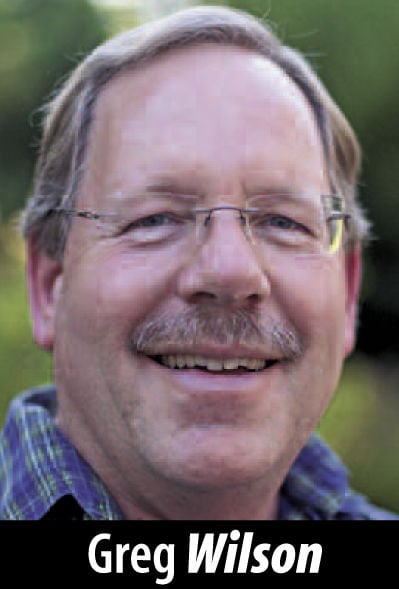This week I “attended,” via my web browser, meetings of both the Redwood City Council and the Planning Commission. Both had much to hold my interest, although for the average citizen the meetings may not have been the most exciting. For its part, the City Council approved new district boundaries for its elections. The council also agreed to use city funds to help turn the Comfort Inn & Suites, which is being purchased by the county, into homes for certain low-income residents, and it accepted the business plan for the Redwood City Ferry project, enabling that project to proceed to the next step.
As for the Planning Commission, it held a joint session with the Housing and Human Concerns Committee to comment on, and accept public comments on, the draft Housing Element. Although this particular topic may not sound exciting, it affects how and where housing can be built — and of what type — all throughout the city. Residents interested in the future of Redwood City’s housing stock would be well advised to look over the draft Housing Element and be prepared to give their feedback, either via email or during future meetings on the topic.
The Housing Element is the section of the city’s General Plan that analyzes how much housing will be needed by households earning at a number of defined income levels, and outlines strategies by which the city intends to guide the creation of that housing (Other parts of the General Plan deal with land use, transportation, conservation, noise, open space and safety). Just how much housing needs to be created is determined through a process known as the Regional Housing Needs Allocation. Every eight years, this state-run process mandates a new set of housing goals for each city, town and county, statewide.
From the years 2023 to 2031, Redwood City is being required to enable the creation of 4,588 new dwelling units (apartments, single-family homes, condominiums, Accessory Dwelling Units, and so on). Anticipating growth beyond what the state has projected (a 20% increase by 2045), and because housing projects — which are typically put forth by private developers acting on their own goals and timetables — won’t always meet the city’s precise needs at the right times, Redwood City is adding a substantial amount of padding to the goals it has been given, increasing them by 50%. Thus, it is planning for the creation of 6,882 new homes by the year 2032, rather than the mandated 4,588.As for where all of those homes will be built, that’s also part of what the Housing Element aims to specify. In some of the city’s single-family neighborhoods, a few new homes will be created as the result of Senate Bill 9. As well, the city intends to facilitate duplexes and triplexes (so-called middle density housing) in residential neighborhoods throughout the city. Finally, ADUs will add additional housing to parcels that traditionally have contained only a single dwelling unit.
In Redwood City’s mixed-use areas (areas where housing can be mixed with other functions, such as office and retail), the plan is to increase density by rezoning those areas to allow an additional 20 dwelling units per acre. Along Veterans Boulevard and Woodside Road, the city proposed rezoning some portions that today cannot be used for housing. Various commission and committee members suggested that something similar be considered for other high-traffic areas of the city, including parts of Alameda de las Pulgas, Jefferson Avenue and even Farm Hill Boulevard.
Finally, the city proposes altering the zoning in certain sections of the city to aid in the preservation of homes that traditionally have been naturally affordable, such as its mobile home parks.
City staff anticipates that together these changes could enable Redwood City to exceed even its 150% goal for all income categories, except for “above moderate” (that is, unsubsidized market-rate homes). And even there, the number of market-rate homes projected to be built would exceed that category’s RHNA goal.
So many new homes will visibly change the look of Redwood City, primarily along high-traffic corridors. Expect more large multifamily housing developments to join projects already in the pipeline such as ELCO Yards (soon to get underway on Towne Ford’s former site) and the Sequoia Station redo (which has yet to be approved). And some of Redwood City’s single-family homes will undoubtedly be replaced by two or even four homes, although there will likely be relatively few of those.
The in-process update to Redwood City’s Housing Element, although not the greatest bedtime reading, lays out a picture of a changed city, one that says “welcome home” to an increased number of residents. If that is your vision for the city, great. If not, you’ll find details of the plan and a road map showing how it will develop on the city’s website at welcomehomerwc.org.
Greg Wilson is the creator of Walking Redwood City, a blog inspired by his walks throughout Redwood City and adjacent communities. He can be reached at greg@walkingRedwoodCity.com. Follow Greg on Twitter @walkingRWC.
























(0) comments
Welcome to the discussion.
Log In
Keep the discussion civilized. Absolutely NO personal attacks or insults directed toward writers, nor others who make comments.
Keep it clean. Please avoid obscene, vulgar, lewd, racist or sexually-oriented language.
Don't threaten. Threats of harming another person will not be tolerated.
Be truthful. Don't knowingly lie about anyone or anything.
Be proactive. Use the 'Report' link on each comment to let us know of abusive posts.
PLEASE TURN OFF YOUR CAPS LOCK.
Anyone violating these rules will be issued a warning. After the warning, comment privileges can be revoked.